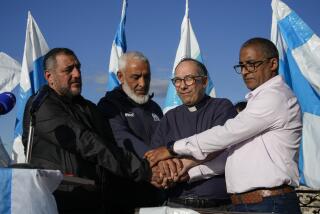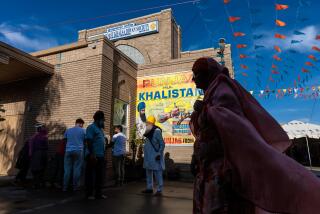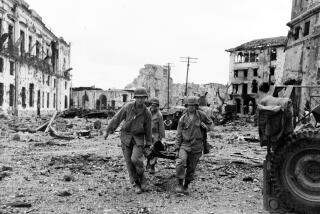Finally, a museum will document the horrors of partition that many Indians and Pakistanis want to forget
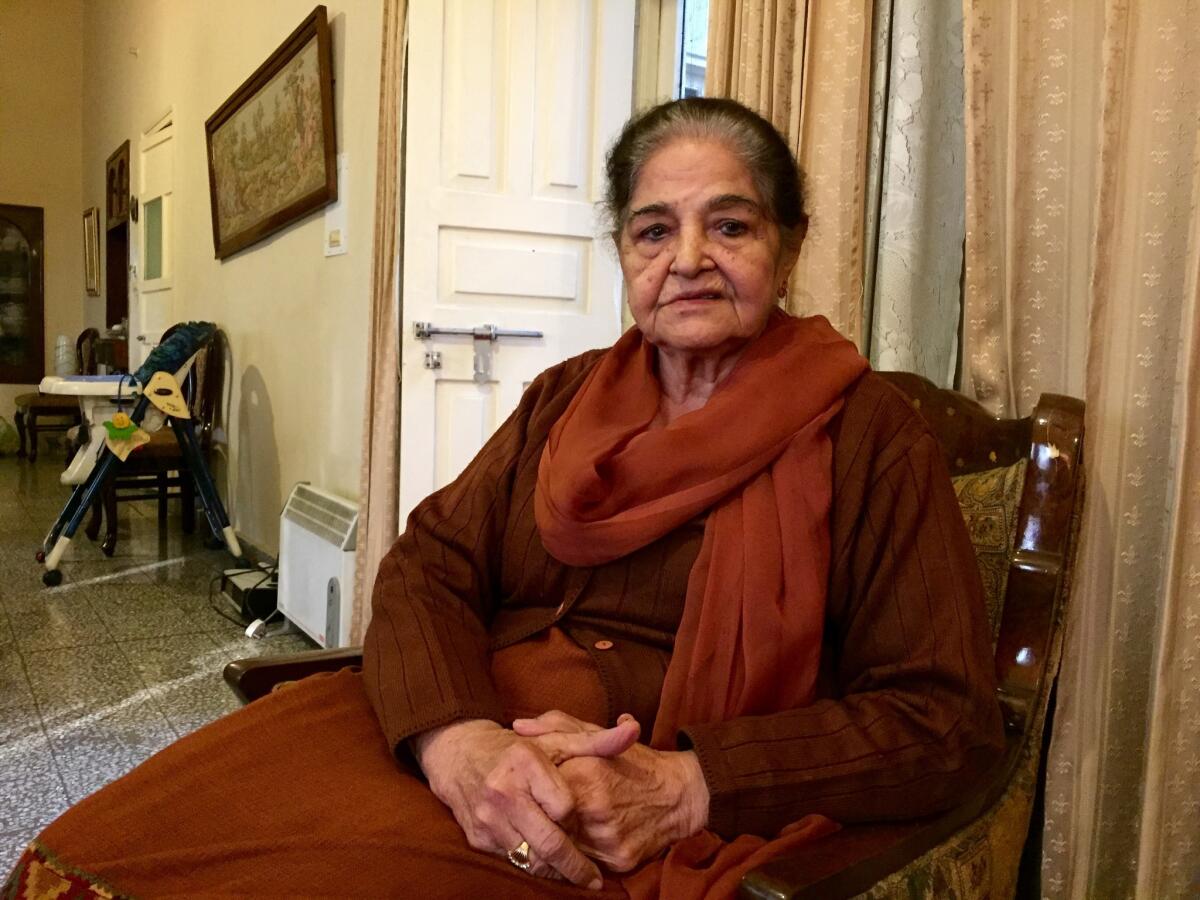
Reporting from Amritsar, India â Amolak Swaniâs knobby fingers gripped a cane as she shuffled into the room, her daughter holding her at the elbow. She settled into a chair with a sigh and began telling her story.
Swani was 16 when Muslim mobs in the city of Peshawar, in the northwest corner of what was then British India, burned down the houses of minority Sikhs in early 1947. The city where the family had lived for generations was about to become part of a new Muslim nation called Pakistan.
With their long hair and turbans, Sikhs were easy to spot. Swani and her family cowered in their second-story residence for days as their phone line was cut and food supplies ran low.
One day her father came upstairs carrying a box of matches and a canister of fuel.
âIf a mob breaks in, they will do terrible things,â Swani said he told her and her mother. âSet yourselves on fire. Donât fall into their hands.â
Her father and husband, both in the dried fruits business, were away on business when the familyâs employees, all Muslims, hatched a plan for Swani and her mother to escape Peshawar.
Wearing burkas the workersâ wives gave them, the pair climbed into the back of a company truck and hid behind boxes of almonds and raisins. They drove to the train station, where the women joined crowds of Sikhs and Hindus heading east to what would soon become an independent â and secular â India.
Among the few luxuries Swani spirited out of their house were her wedding jewelry, hidden inside a Singer sewing machine, and a radio. The radio â and Swaniâs story â will soon form part of the first museum dedicated to the 1947 division of the two countries, known here simply as Partition.
It is time we saved these memories while our generation is still here.
— Amolak Swani
âMy children said they never knew these stories before,â said Swani, 86. âIt is time we saved these memories while our generation is still here.â
Occupying part of the stately, colonial-era town hall in the Indian city of Amritsar, less than 20 miles from the Pakistani border, the Partition Museum marks the first significant effort in either country to create a permanent reckoning of their violent breakup.
In what has been called the bloodiest migration of the last century, at least 14 million people were uprooted from their homes and approximately 1 million died in sectarian killings or from disease and hunger as the British carved out Pakistan from Hindu-majority India. Hindus and Sikhs were forced to flee their homes in what became Pakistan, while Muslim families faced attacks as they tried to leave India.
Employing personal artifacts and oral histories, the museum aims to memorialize the experiences of the people who died and those who lived through it.
As the independent nations grew into fierce rivals, fighting three wars, few are willing to confront the shared horrors of Partition.
âOther countries have commemorated the experiences that shaped them in so many ways,â said Mallika Ahluwalia, a trustee of the Arts and Cultural Heritage Trust, the nonprofit organization that established the museum in October.
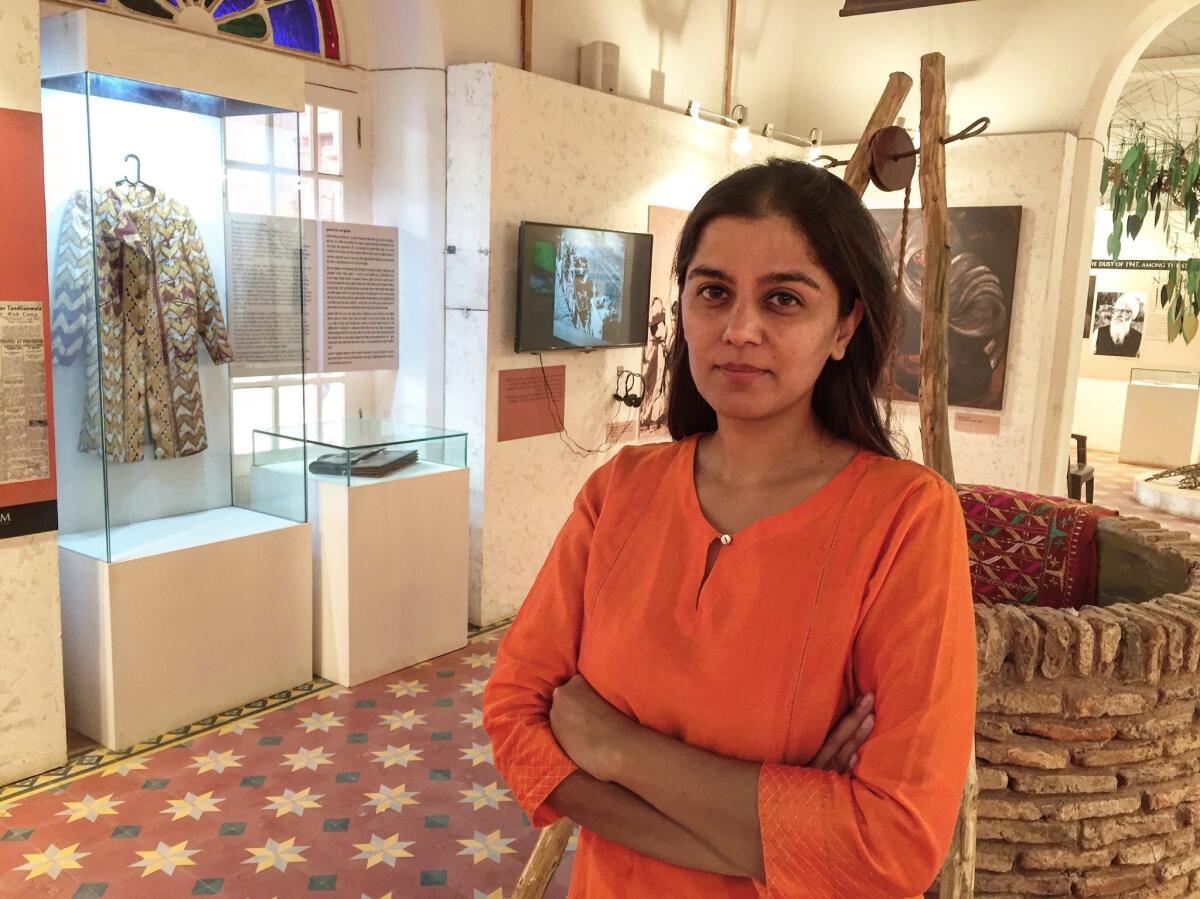
Trustee Mallika Ahluwalia is pictured in one room of the Partition Museum. Displayed at left are a coat and briefcase donated by survivors.
âIn India this continues to shape the country and yet we have nothing like this. This is one step in that direction.â
Schoolbooks in India and Pakistan gloss over the subject. The violence had few parallels in the 20th century except perhaps the Holocaust or the Rwandan genocide â but unlike in Berlin or Kigali, no city in either India or Pakistan houses a memorial to the victims.
âIt is one of those very peculiar cases of ethnic cleansing in which all three communities were victims and all three communities were also perpetrators of the crimes,â said Ishtiaq Ahmed, an author and Partition scholar in Lahore, Pakistan.
âThe result is we donât want anything of the sort to be remembered. The communities and their spokespeople donât want it to be remembered. So itâs taken a long time before some people could finally overcome all the trauma and all the complexities and decided to establish this museum.â
As Partition survivors slowly die off, there is a belated recognition of the importance of recording their stories. A separate nonprofit initiative based in Berkeley, the 1947 Partition Archive, has collected more than 2,000 oral histories of survivors and will soon make the material available online.
The museum is the only physical memorial. Its collection is skewed toward the experiences of those living in India, because the curators have not collected material from Pakistan. However, they are in contact with Pakistani groups and plan to expand the collection in the coming months.
The museum is in Amritsar down a busy pedestrian thoroughfare from the Golden Temple, the holiest site in Sikhism. A commercial center during colonial times, the city suffered some of the worst violence of Partition.
In the heart of the Punjab territory, it was a religiously mixed place, with Hindus and Sikhs together forming a slight majority over Muslims. In the final days before the boundary was announced in August 1947, as it became clear that Amritsar would fall inside India, Sikh mobs overran Muslim neighborhoods and killed hundreds, while thousands took shelter from the violence inside the Golden Temple.
Tales of frantic departures and families torn apart fill the rooms of the museum. One display case features the warm, multicolored phulkari coat worn by a 22-year-old Sikh woman, Pritam Kaur, who fled mob attacks in western Punjab but had lost track of her fiance in the violence.
She reached a refugee camp in Amritsar with her 2-year-old brother â and found her fiance, Bhagwan Singh, waiting in a long line for food rations. They were married the following year in a simple ceremony. In the display case next to the coat is Bhagwan Singhâs leather briefcase, one of the few possessions he carried with him to his new home in India.
Follow @SBengali on Twitter for more news from South Asia
ALSO
Facing allegations of corruption, Netanyahu questioned by Israeli police
People are dying because of an audacious cash policy that India says will modernize its economy
More to Read
Sign up for Essential California
The most important California stories and recommendations in your inbox every morning.
You may occasionally receive promotional content from the Los Angeles Times.
